By Ashfred Norris
“The hood made me realize that crime succeeds because crime does one thing the government doesn’t do: crime cares. Crime is grassroots. Crime looks for the young kids who need support and a lifting hand. Crime offers internship programs and summer jobs and opportunities for advancement. Crime gets involved in the community.”- Trevor Noah Born a Crime

Trevor Noah, in his book ‘Born a Crime’, detailed his life of living in the era of apartheid; a law which basically defined the premise of racism in South Africa. With the use of short stories, Noah showed the world what his life was like growing up as a child in a time where his black mother and white father had to pretend that this mixed child doesn’t belong to them whenever they were out in public, and if the police found out that a black fraternized with a white, how the black could go to jail, the white goes scott free and the mixed child could end up in a child services system. In essence, Noah depicted the state and condition of the lives South Africans had to endure, while revolving the subject matter around one main constant; poverty.
My partner and I , on our topic on the Carisealand project; Environmental Justice, Human Impact and Poverty, plan on going along the same lines of Trevor Noah’s Born a Crime, but instead of using short stories why don’t we use digital storytelling, and instead of using apartheid, let’s use Climate Change.
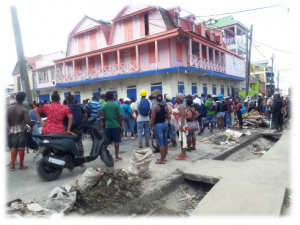
When we first set out to begin the project, we were faced with our first obstacle; having to answer a pressing question. A question that would dictate the rest of our journey, and deem this project a success or failure. A question, if answered correctly, could set us out on a path to redefine the entire concept of poverty and its relationship with Climate Change and alter everyone’s perception on the subject matter. A question which said… what now? What do we do now? Where do we go? Who do we speak to? What should we read? What should we listen to… what now? After we were able to remove ourselves from our doldrums, we had a clear idea of what we wanted our project to look like… The Now. Now, this may sound weird, and I should probably be sued for the amount of times that I’m saying the word ‘now’ in one paragraph, but the accuracy and relevance of this statement; especially given our current climate and circumstance having recently survived a category 5 hurricane, is of supreme importance to the viability of the project.
The Now says, this is what we’re currently going through. Here are the challenges that we are being faced with in the present time. This is what environmental justice looks like, this what poverty has evolved into, and this is how it affects the community; the human.
Trevor Noah was able to meet the demand on informing the public on how apartheid made South Africa fall apart, and even after its decimation, how it still affects the South African populace, even today. My aim is to show how climate change has reconstructed the laws which once governed our environmental justice. How its impact births a new type of poverty and the implications that all of this has on our communities. This is The Now.

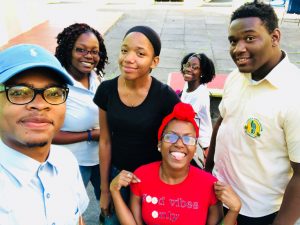
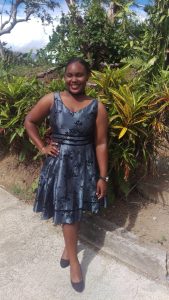
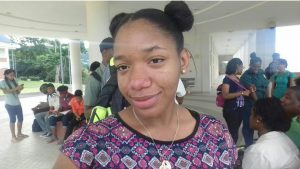 I joined Create Caribbean this summer not even knowing what it exactly was. I always thought it was just a group of nerds doing a ton of work who never sleep. I had no interest in this Internship programme whatsoever. I guess you can say that it is really funny how much the tables have turned. I became one of these ‘nerds’ during my second year at the Dominica State College and I can safely say that it was one of the best decisions that I have ever made.
I joined Create Caribbean this summer not even knowing what it exactly was. I always thought it was just a group of nerds doing a ton of work who never sleep. I had no interest in this Internship programme whatsoever. I guess you can say that it is really funny how much the tables have turned. I became one of these ‘nerds’ during my second year at the Dominica State College and I can safely say that it was one of the best decisions that I have ever made.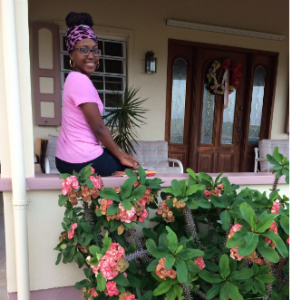 Returning to Create Caribbean has been a pleasure despite the catastrophe, great losses and agonizing pain following Hurricane Maria. It has been sort of an escape from all the chaos and changes happening presently. Create Caribbean itself has been going through a few changes but nothing that we cannot work through.
Returning to Create Caribbean has been a pleasure despite the catastrophe, great losses and agonizing pain following Hurricane Maria. It has been sort of an escape from all the chaos and changes happening presently. Create Caribbean itself has been going through a few changes but nothing that we cannot work through. 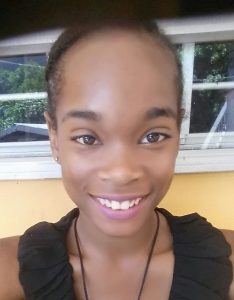 After the passage of Hurricane Maria, life in Dominica paused. The question “where do we go next?” echoed in the minds of the people who saw their life change in a matter of hours. I personally did not know how to move forward, I just knew that I had to. The destruction of the Create Caribbean work facility was unbelievable and the question echoed again, “where do we go next?” It was almost impossible to feel hopeful after seeing such damage. Thankfully, Dr. Esprit was able to instill hope into her interns by reminding us of our purpose. She was not prepared to let the destruction of the hurricane hinder our progress.
After the passage of Hurricane Maria, life in Dominica paused. The question “where do we go next?” echoed in the minds of the people who saw their life change in a matter of hours. I personally did not know how to move forward, I just knew that I had to. The destruction of the Create Caribbean work facility was unbelievable and the question echoed again, “where do we go next?” It was almost impossible to feel hopeful after seeing such damage. Thankfully, Dr. Esprit was able to instill hope into her interns by reminding us of our purpose. She was not prepared to let the destruction of the hurricane hinder our progress.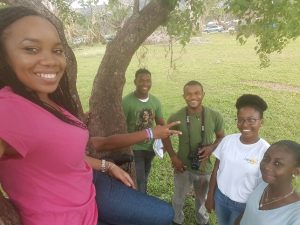 If I had to describe the last few months in an adjective, it would have to be perplexing. In the past few months I’ve gotten the learnt so many new things about Humanities, Research and the human and social aspect of every question I ask. In many ways I would like to think that this period can be described in the quote
If I had to describe the last few months in an adjective, it would have to be perplexing. In the past few months I’ve gotten the learnt so many new things about Humanities, Research and the human and social aspect of every question I ask. In many ways I would like to think that this period can be described in the quote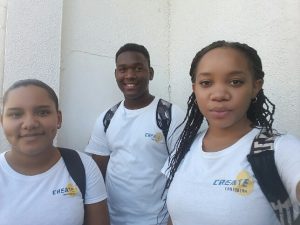 Unfortunately, one of the changes is that I must bid SPAT Memory Project farewell for what I hope is a relatively short time and start a working on Carisealand. Although I have deeply enjoyed the skills I learnt through SPAT, I am also equally excited by the prospects of this new project since it will incorporate my skills and knowledge as not only a Digital Humanist but also as a Scientist. I must admit that I am intrigued as to just how both disciplines will collide in a forum where I will not be mainly focused on the impact of an environmental issue on the world or the impact on society, but, how society and the environment work together in unity for a sustainable future.
Unfortunately, one of the changes is that I must bid SPAT Memory Project farewell for what I hope is a relatively short time and start a working on Carisealand. Although I have deeply enjoyed the skills I learnt through SPAT, I am also equally excited by the prospects of this new project since it will incorporate my skills and knowledge as not only a Digital Humanist but also as a Scientist. I must admit that I am intrigued as to just how both disciplines will collide in a forum where I will not be mainly focused on the impact of an environmental issue on the world or the impact on society, but, how society and the environment work together in unity for a sustainable future.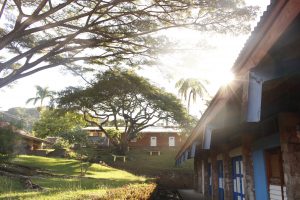 I am happy to see that as the New Year started things are getting back in place. The topic I am working on, alongside side Tonilia Eli, is economics of hurricanes and its impact on tourism. Dominica was devastated after Maria and it will take a long time before we get back to how it used to be. Many of our business places are gone and the employment level is really high. The tourist sites are destroyed, as well as, the hotel that accommodate the visitors. In this project, we are trying to compare Dominica to the other islands. It can be seen that the other island are recovering faster than us, for example, St. Martin. That is because they still have a “mother land” on which they can seemingly rely and get help from while in the other hand Dominica is independent and has to get back up on its own.
I am happy to see that as the New Year started things are getting back in place. The topic I am working on, alongside side Tonilia Eli, is economics of hurricanes and its impact on tourism. Dominica was devastated after Maria and it will take a long time before we get back to how it used to be. Many of our business places are gone and the employment level is really high. The tourist sites are destroyed, as well as, the hotel that accommodate the visitors. In this project, we are trying to compare Dominica to the other islands. It can be seen that the other island are recovering faster than us, for example, St. Martin. That is because they still have a “mother land” on which they can seemingly rely and get help from while in the other hand Dominica is independent and has to get back up on its own.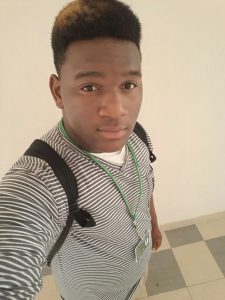 In September 2017, a new school year began- which means I finally became a 2nd year Create intern! This symbolizes that I’ve successfully gotten through the probation period, did my fair share of mini projects as a first year student, and can now work on the ‘big-kid’ projects like
In September 2017, a new school year began- which means I finally became a 2nd year Create intern! This symbolizes that I’ve successfully gotten through the probation period, did my fair share of mini projects as a first year student, and can now work on the ‘big-kid’ projects like